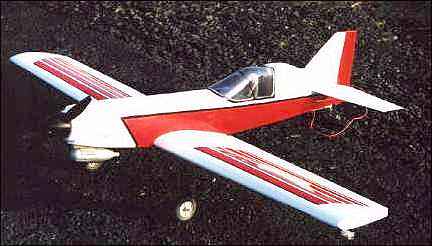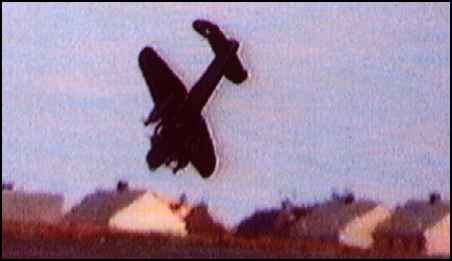My interest in modelling started as a 12 year old, when I built a control line model called a Phantom Mite, powered with a 1cc diesel from Davis Charlton, who manufactured the engines on the Island. Jobs and family have intervened, but my interest was rekindled by visiting a display hosted by the local club, Manx Model Flyers.
These photos show a few of the models that I’ve built and flown over the years since then. I mostly fly R/C power models, but I also have a go at any sort of R/C flying, including thermal, slope and electric. I’ve also retained my interest in control line models, albeit only occasionally.
Galaxy Models Twin Hornet.

56″ span, fitted with twin OS 25 engines. Built to get some multi engine experience before embarking on the Lancaster project this model has proven easy to fly and is fully aerobatic. It’s now honourably retired.
Galaxy Models Jester
40″ span biplane fitted with an OS 25FSR. At the time this was built our club used to perform a display routine consisting of WW1 aircraft, and as we were very short of German models, I used this colour scheme to provide an enemy for the RFC to chase 🙂


Galaxy Models Wizard
40″ span, fitted with an OS25FSR. This is one hairy little beast, the OS25 providing plenty of power, and despite the models small size, it is great fun to fly capable of performing smooth manoeuvres. The design is a smaller version of the Galaxy models Magician which I had a few of and was always impressed by their flying ability.
Flair Cub
62″ span, with an OS46FS. This was built to teach my daughters Rachel (seen holding the model), and Katie to fly. As it happens, this model, despite being designed as a trainer, flies so well that it is my favourite and has provided me with hours of fun. I’m sure the girls will get a go on it one day! This model uses a Sanwa radio system, which has a buddy box facility, making flying lessons a lot less stressful on the instructor.


Pitt Master
40″ span, ASP 40 engine. Designed to look similar to the Pitts special, this model is all foam, including the fuselage, and was very quick to build. It’s flying qualities were excellent, very maneuverable, and like all biplanes, easy to land. Lost in a high speed dive after a battery pack failure.
Pat French Models CAP21.
60″ span with 0S40FSR. In the colours of Tony Bianchi. A great performer, capable of every manoeuvre, with a special talent for Lomcevaks. Now deceased, after too tight a turn on to final when deadstick, resulting in a terminal spin.


Precedent Stampe.
Fitted with SC108 engine. 72″ span and a delight to fly. This big biplane takes a few minutes to rig, but once in the air is an absolute dream, with a smooth flight performance. I bought it built but unflown from a fellow club member, and after two seasons of regular and highly enjoyable flying sold it on to make room for other models.

ASK14.
A semi-scale model of the ASK14 from Graupner. Rudder and elevator only, this model soars reasonably well, but had to have the dihedral increased quite a bit to make it turn satisfactorily. Fortunately it had a simple wire wing joiner so it was very easy to just bend it the required amount.
AVRO Lancaster.
Built from a plan by Chris Golds. 90″ span, fitted with 4 .25 engines. This model uses a simple construction of carved foam covered with brown paper. As shown here it is still awaiting the final markings, but is ready to fly. Unfortunately this model suffered a double engine failure on it’s maiden flight and spun in, being damaged beyond repair 🙁

Pre flight Photos


These are stills pulled from the video hence the poor quality.





Post Flight!